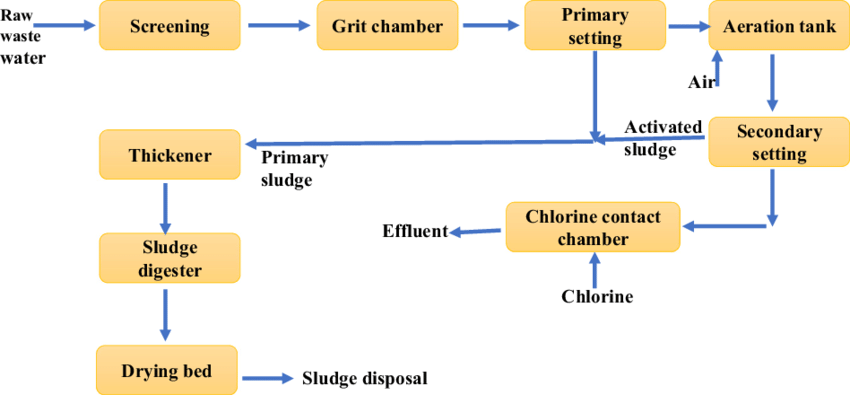Little Known Questions About Reclaim Waste.
Table of ContentsThe Best Guide To Reclaim WasteGetting The Reclaim Waste To Work9 Simple Techniques For Reclaim WasteReclaim Waste for BeginnersA Biased View of Reclaim Waste
Explore the kinds, occurrences, and types of fluid waste. Residential sewage waste refers to the waste and products from a domestic septic tank. This kind of waste is produced by humans in residences, institutions, and various other buildings. This only includes sewage-disposal tanks that have a drain area. The correct administration and disposal of domestic sewer waste call for liquid waste to be moved to a sewer treatment plant where the proper approaches and tools are related to purify and get rid of waste.
Commercial waste typically consists of prospective dangers, such as combustible products or a combination of liquid and solid waste products, and requires a much more innovative and detailed disposal process. The disposal of industrial waste usually involves the filtration of waste before transport to guarantee safe and correct disposal. Hazardous waste is developed from results and overflow of commercial processes and manufacturing.
This sort of waste can not utilize the very same sewage management transport or procedures as septic or industrial fluids. The hazardous waste administration procedure requires the assessment and testing of fluid waste before it undergoes the disposal process (industrial wastewater treatment). Overflow waste is the fluid waste that comes from overflow and excess stormwater in highly booming areas or cities
Drainage waste can create contamination and flooding if not managed properly. Ensuring proper waste administration can stop catastrophes and minimize ecological harm.
Indicators on Reclaim Waste You Need To Know
Get in touch with PROS Providers today to discover concerning our waste administration and disposal solutions and the correct ways to look after the fluid waste you produce.
(https://reclaim-waste-f27e88.webflow.io/)This supposed 'wastewater' is not just a crucial resource yet, after therapy, will certainly be launched to our land, rivers or the sea. Utilized water from toilets, showers, baths, kitchen area sinks, washings and commercial processes is recognized as wastewater.

water utilized to cool machinery or clean plant and equipment). Stormwater, a form of wastewater, is overflow that moves from agricultural and urban areas such as roofings, parks, gardens, roads, paths and rain gutters into stormwater drains, after rainfall. Stormwater moves neglected directly to local creeks or rivers, eventually getting to the sea.
Unknown Facts About Reclaim Waste
In Queensland, the majority of wastewater is treated at sewage therapy plants. Wastewater is delivered from domestic or commercial sites through a system of drains and pump stations, called sewage reticulation, to a sewer treatment plant. City governments develop, preserve and run most sewage therapy plants. Operators are licensed under the Environmental Management Act 1994 to release cured wastewater at an acceptable environmental requirement into rivers.
The Division of Natural Resources suggests neighborhood governments about handling, operating and keeping sewage systems and treatment plants. In unsewered locations, regional federal governments might require householders to install individual or household sewer therapy systems to deal with domestic wastewater from commodes, kitchens, shower rooms and washings. The Division of Natural Resources authorises the use of family systems when they are proven to be efficient.
In some new class, therapy of some stormwater to remove trash, sand and crushed rock has started making use of gross toxin traps. Wastewater therapy occurs in four stages: Gets rid of solid matter.
Wastewater after that streams into big containers where solids work out and are removed as sludge. Oil and scum are skimmed from the surface area. Uses little living microorganisms called micro-organisms to break down and remove staying dissolved wastes and great fragments. Micro-organisms and wastes are included in the sludge. Eliminates nitrogen and phosphorus nutrients that could cause algal blooms in our rivers and threaten water life.
A Biased View of Reclaim Waste
Nutrient elimination is not readily available at all sewage therapy plants due to the fact that it requires pricey specialized devices. Clear fluid effluent generated after therapy might still moved here consist of disease-causing micro-organisms - liquid waste disposal melbourne.

The majority of wastewater flows right into the sewerage system. Under the Act, neighborhood governments carry out authorizations and permits for eco relevant activities (Ages) including wastewater releases that might have a neighborhood impact.
The 8-Second Trick For Reclaim Waste
Otherwise, samples are taken for research laboratory evaluation. Frequently several examinations are needed to develop the levels of each of the different contaminants such as oils, heavy steels and chemicals in water. Monitoring supplies accurate information regarding water high quality and can validate that licence conditions are being fulfilled. The details gotten through tracking offers the basis for making water quality decisions.